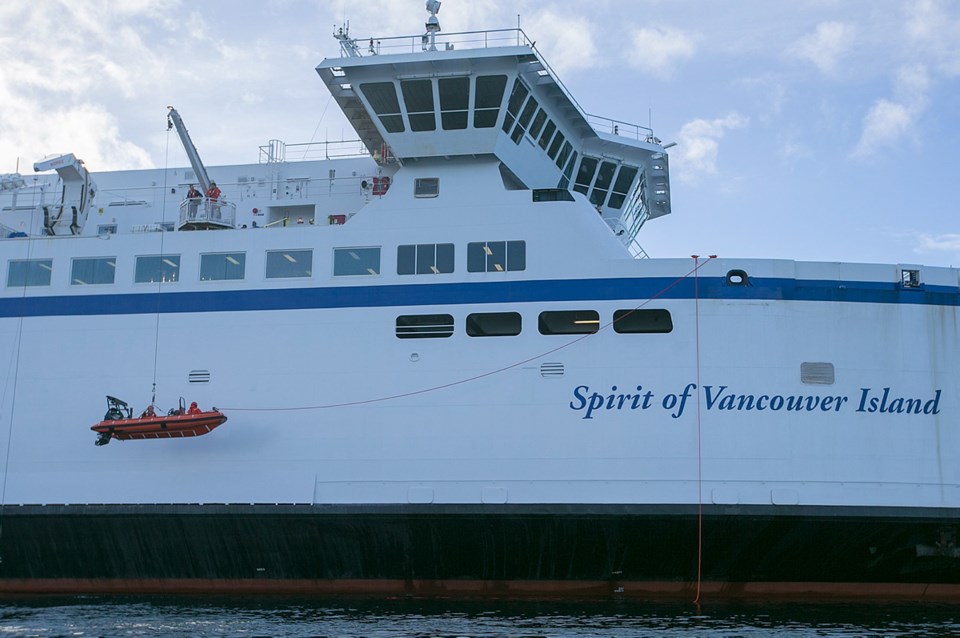Use of an insufficient length of rope on a rescue boat caused it to fall and injure two crew members during a drill on B.C. Ferries’ Queen of Cumberland last year, according to a Transportation Safety Board investigation.
Both crew members were wearing survival suits and helmets when the incident occurred during drills near Swartz Bay terminal on April 18, 2018.
A davit — a mechanism for raising and lowering boats — was being used when the hoist cable broke. The rescue boat dropped 11 metres into the water, injuring both crew members, one of them seriously.
The TSB said the lack of length for the rope, known as a painter, exerted a force on both the boat and the hoist cable. A painter is attached to the bow of a boat.
“The resulting side load caused the hoist cable to get pinched and break, resulting in the boat falling into the water along with the two crew members,” the TSB said in a statement.
A vessel deployed from shore reached the crew members within a few minutes and they were pulled from the water. Both were taken to hospital for assessment.
After the incident, B.C. Ferries put in number of a measures, including updated training for the operation of davits.
“Primarily we’ve got a fleet-wide restriction in place that prohibits crew members from going into boats for the purposes of a drill launch from a high height,” said Darren Johnston, executive director of fleet operations. “We’ve taken the position that, in the meantime, until we can take care of a few other issues, that we won’t expose employees to the risk of something like a cable breaking as a result of a painter being inadvertently cleated up two metres shorter than it should have been.
“People are only to go in boats and be hanging off a wire at high height in the event of an actual emergency, such as a marine rescue where we’re conducting lifesaving activity.”
Johnston said the restriction isn’t the long-term goal, and that the hope is to have a custom-built, fall-protection system put in place.
“We’re working with an engineering firm and some of the regulatory agencies to get approval.”
The TSB determined that although Queen of Cumberland’s rescue-boat davit was upgraded in 2016, some corresponding updates to operation and maintenance procedures were not made.
Johnston said many initiatives are currently going on.
“In the example of the planned maintenance systems, we continue to work on a large initiative at the ferries here to overhaul and update all of our processes for planned maintenance of this type of equipment.”
He said the incident is “a lesson learned,” and that an overview taking in an array of equipment is underway.
The TSB said it is important to manage equipment changes effectively on ships.
“Additionally, if changes to operation procedures and training are not made, the crew may not be proficient in the use of the equipment,” the TSB said. “Both of these factors increase the risk of equipment failure, accidents or injuries.”



